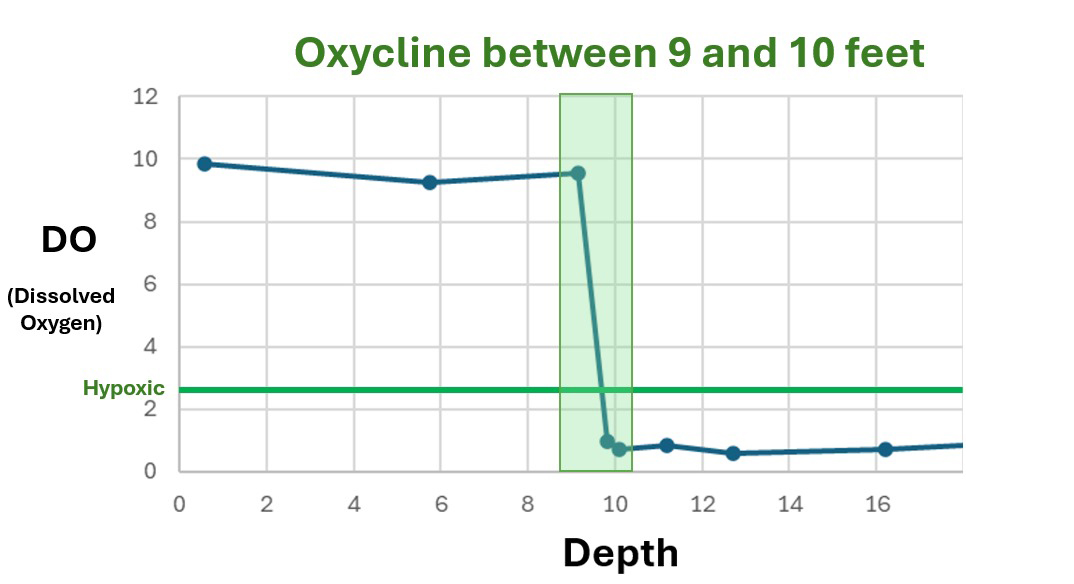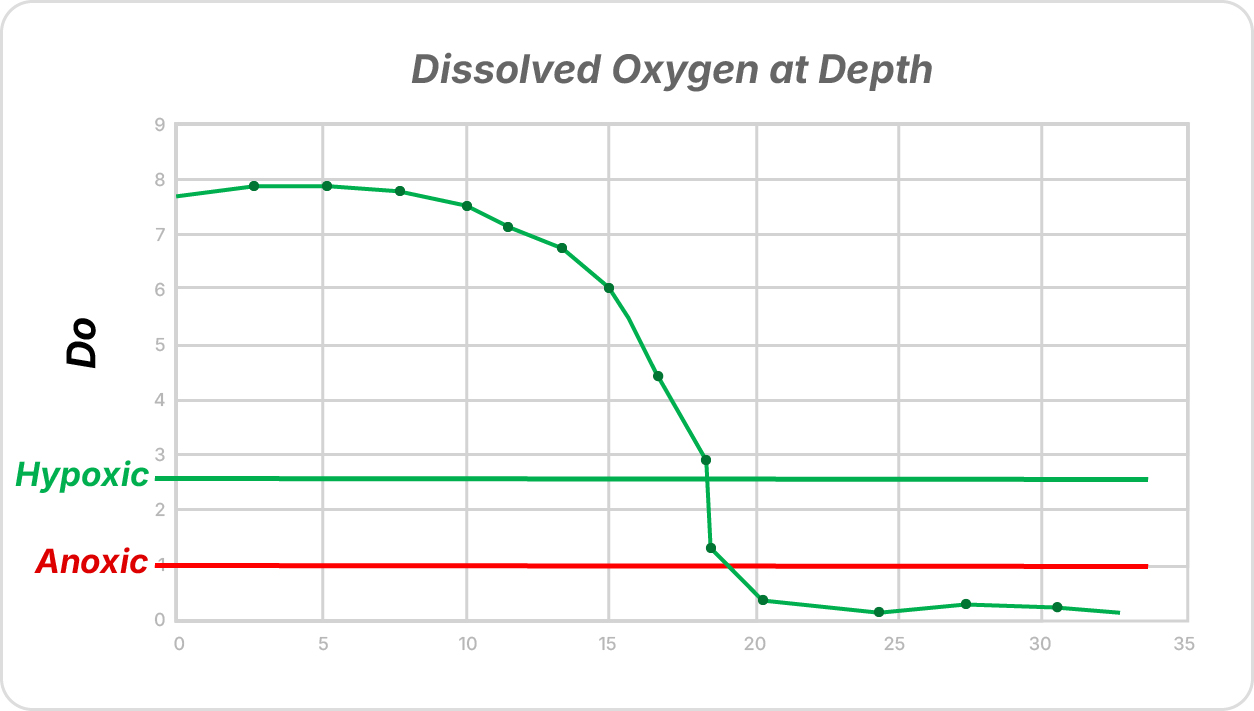

Hypoxia
What Is Hypoxia?
Hypoxia is a condition in which dissolved oxygen levels in a water body are too low to support animal life, which makes up the crucial nutrient-clearing food web in every aquatic ecosystem.
The Environmental Protection Agency (EPA) defines dissolved oxygen levels below 2.5mg/l as hypoxic, while levels below 1mg/l are considered Anoxic.
The Critical Role Hypoxia Plays In Waterbodies
Hypoxia impacts aquatic ecosystems in several significant ways:
Animal Life
Animals cannot survive in hypoxic conditions. Benthic zooplankton, which live near the sediment and consume organic detritus and decomposing biomass, cannot survive when the sediment is covered by hypoxic water. Losing these organisms at the food web’s base level has cascading effects upon the entire ecosystem. Predators like crustaceans and fish that consume zooplankton and clear biomass and nutrients from the water are starved and have less habitable water volume, further reducing the ecosystem’s nutrient-clearing capacity.
Microbial Transformation
Hypoxia transforms the sediment’s microbiology. Aerobic microbes, (which require oxygen) are replaced by anaerobic microbes. Most pathogenic microbes are anaerobic, and they produce substances like hydrogen sulfide and ammonia that are toxic to fish, further degrading animal life and the food web. Ammonia at the bottom of a lake also strongly favors the proliferation of cyanobacteria, that produce harmful algal blooms (HABs). Research has shown that anaerobic microbes (bacteria and archaea) actively recycle nutrients in a symbiotic relationship with cyanobacteria.
Nutrient Solubility
Phosphorus, a key nutrient for algal growth, is more soluble in hypoxic water than in well-oxygenated water so phosphorus levels are greater at the bottom than near the surface. Cyanobacteria can control their buoyancy and dive down to the bottom at night to access this abundant phosphorus, giving them a competitive advantage over floating green algae. This further contributes to the dominance of cyanobacteria and nutrient recycling in the ecosystem.
How To Measure Dissolved Oxygen And Hypoxia
Measuring dissolved oxygen is relatively straightforward with the right equipment. A probe is lowered into the water, and readings are taken every couple of feet.
This allows for the identification of the oxycline, which is the depth at which water becomes hypoxic. Using bathymetric data, we can calculate:

🔹The volume of water that is hypoxic and therefore uninhabitable for animal life.
🔹The surface area of sediment that is hypoxic and therefore unable to support animal life and acts as the main source of nutrient recycling.
This is essential information for designing effective programs to reverse eutrophication and improve lake health.
Regular measurements of dissolved oxygen throughout the year are necessary to track the condition of the water body and inform adaptive management practices for remediation and maintenance of water quality.
What Do Hypoxia Measurements Tell You?
Understanding the degree of hypoxia and deoxygenation in a water body is essential for designing and configuring the right oxygenation system. Without this knowledge, one would have to rely on guesswork.
🔹Our RADOR systems provide the flexibility to adjust and modify how the system operates in response to oxygenation dynamics seasonally and as the depth profile of the lake changes due to Bio-Dredging.
🔹Detailed measurement and modeling of dissolved oxygen levels throughout the water column, combined with bathymetric analysis, enable us to ensure that a water body is fully oxygenated at all times.
CLEAN-FLO
827 Lincoln Avenue, Suite 1
West Chester, PA 19380
Phone: 800-328-6656
E: contact@clean-flo.com


